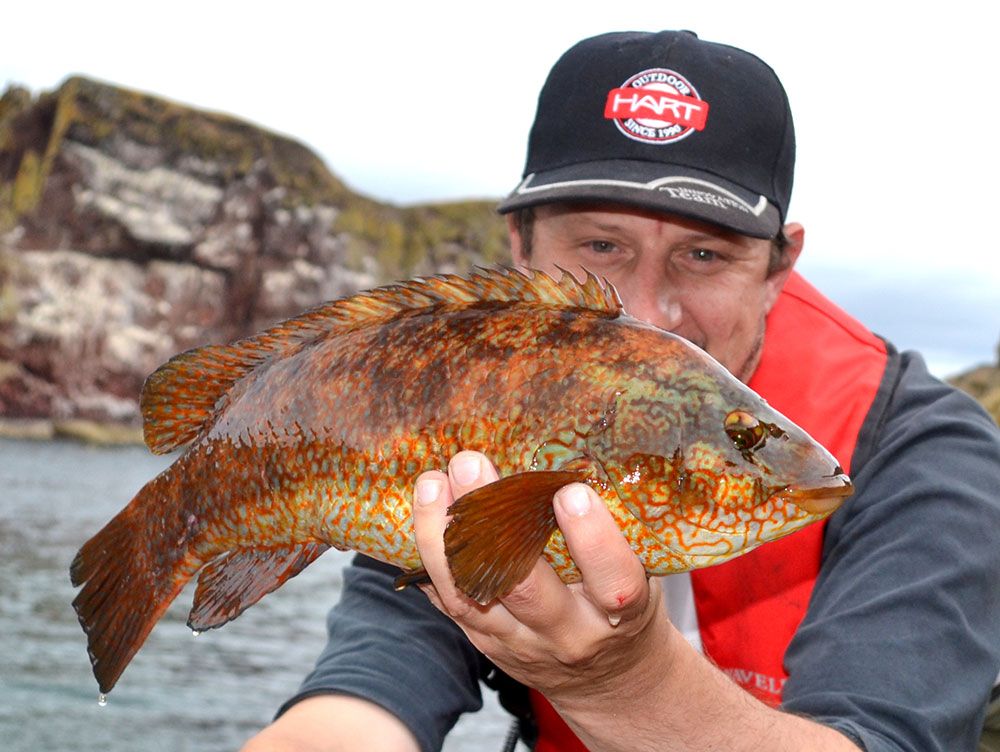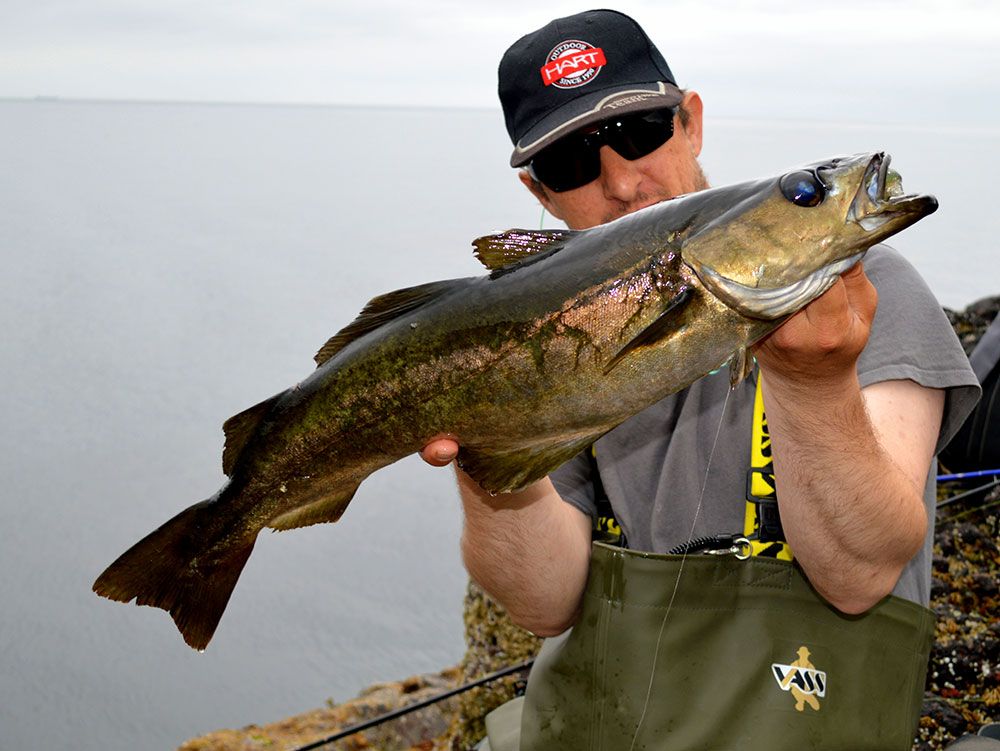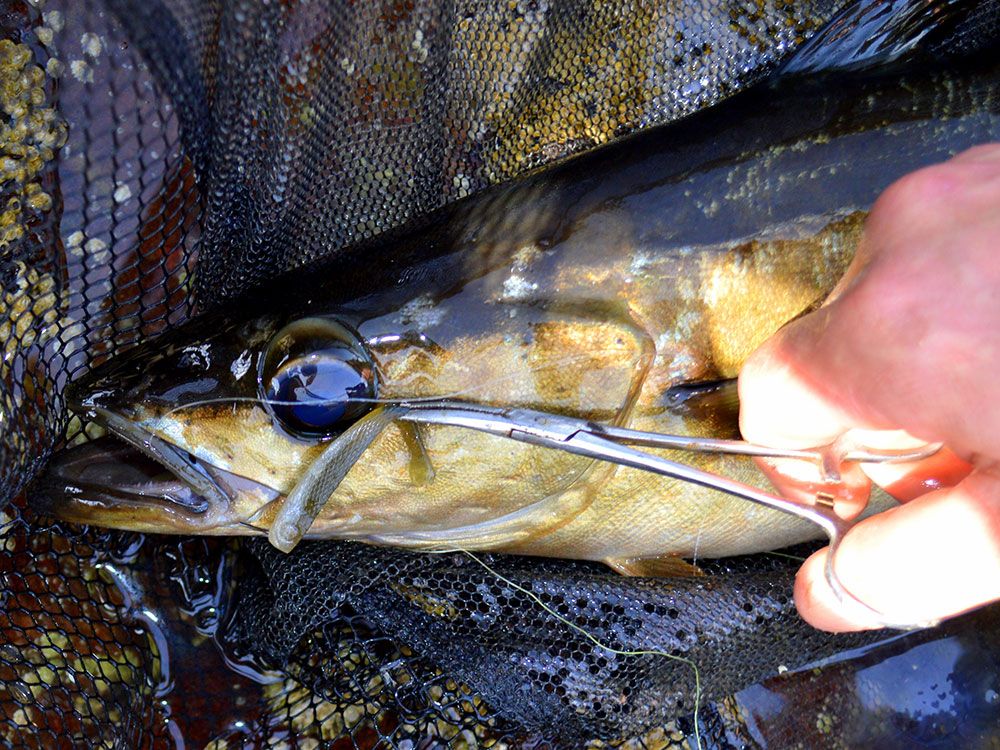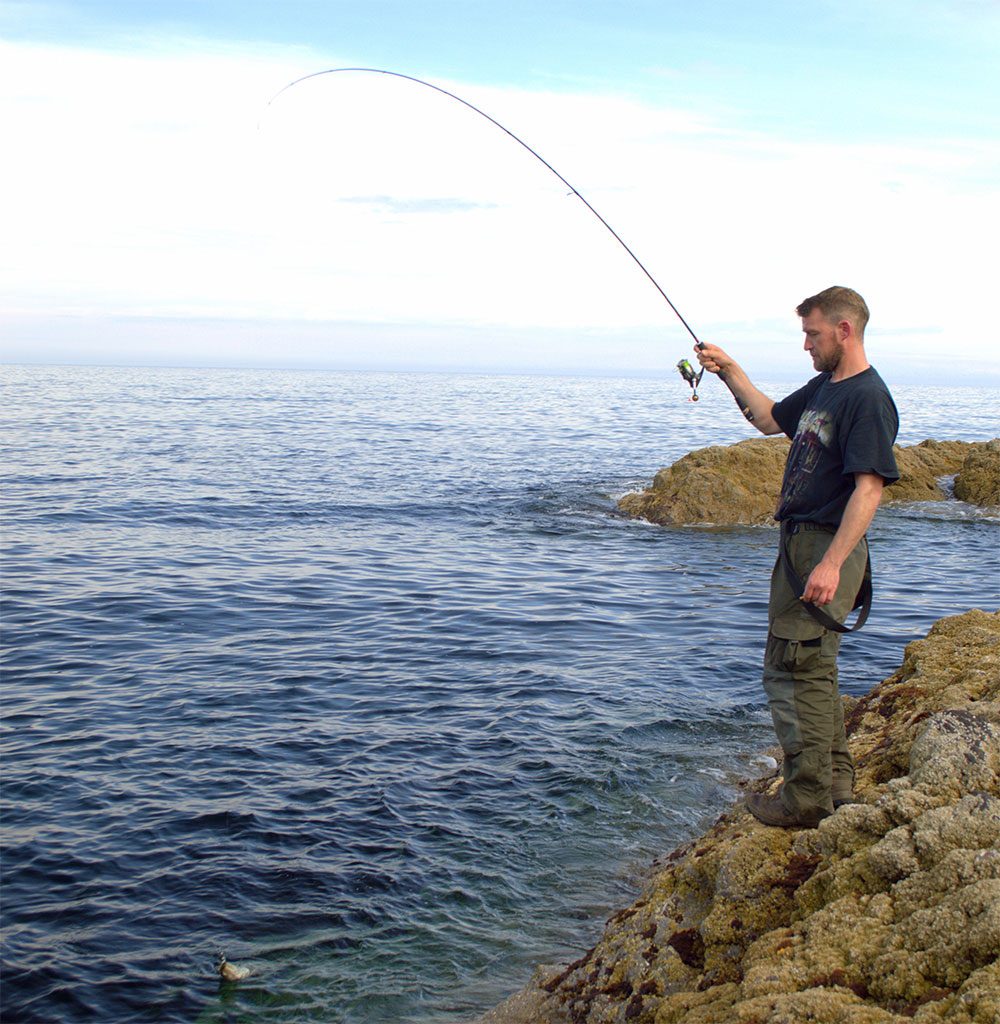Rightly or wrongly Light Rock Fishing has become associated with the quest for small fish. Be these mini species such as gobies, blennies and scorpionfish, or immature pollack, codling, bass and coalfish. Ultra light tackle is the perfect way to catch these smaller species. However, the more you use this style of fishing the more you will encounter bigger fish. Indeed there are times when the bigger fish like pollack, bass and wrasse become obsessed with taking small prey items. Hooking up these bigger fish is easy. The hard part is landing them, but with the right tactics it can be done and it is one of the most fun if nerve racking experiences in fishing!
Rods and Reels
Standard LRF rods 7-8ft 1-8gm are more than capable of landing good sized fish, however some rods are that bit more suitable than others! This mainly comes down to the rods inherent action. For fishing close in I much prefer a rod with fast action with power lower down the blank. A stiffer rod may not be as good for cushioning the line but for close range hit and hold tactics I find them superior to a more through action / parabolic rod. A rod with a softer action is great for tiring a fish out but as the rod bends more it means a fish can use the bend of the rod to gain ground without taking line. To counteract the amount a fish can bend an LRF rod it is sometimes necessary to raise the rod above your head, rather than the normal waist level rod position. This simple act can gain you 3 or 4 feet of line and this can be enough to raise the fish up in the water by the same amount. This is vital for close-in work where there is kelp and snags
Most modern spinning reels sport a drag system and this is vital when playing a bigger fish. Try to set the drag so it gives line a little under the breaking strain of the main line. If you really need extra drag then you can brake the line by placing your fore finger on the spool.
Our HTO Rockfish '19 rods, coupled with the HTO Rockfish 2000 Fixed Spool Reel are ideal rods for this style of fishing.

Lines and Leaders
Landing big fish on light tackle is nothing new and a combination of the rod's action and a correctly set drag will see very few fish able to snap your line. However it makes sense that when targeting bigger fish you should up your breaking strain. To this extent when I am deliberately targeting wrasse and pollack with LRF gear I will use PE0.6 dia braid. This will handle most of the fish I am likely to catch but it is very important to keep an eye on it, especially when fishing through snags and rocks. Any fraying of the line has to be noticed and the line cut and retied above this point. Fluffing of the line weakens it considerably and this weakness will be found when you hook a good fish! A high vis braid will help you see the direction a fish is travelling and by keeping an eye on where the braid is going you can apply the necessary evasive action when fish are heading towards snags.
Using a fluorocarbon or mono leader when using braid as mainline is a must. It allows you to incorporate abrasion resistance into a braid set up as well as making your rigs less visible to fish. Although my standard leader length is usually around 5 ft sometimes I make a very long (up to 15ft) rubbing leader. This helps when fishing over barnacle-encrusted rocks and ledges. The extra length of the leader allows me to protect my braid from the effects of rough ground.
Ideal braids from our range include the HTO X4 Light Game Braid and for leader material, our HTO Nebula FC Fluorocarbon.

Other EssentialsO
One of the most essential items to carry when pursuing bigger fish is a long-handled landing net or a drop net. Drop nets are great for when fishing off harbour walls or piers. Landing nets are much more suitable for when fishing off rocks etc. Because we use light line there is no way of being able to swing in or hand line a fish up a harbour wall without either straightening the hook or snapping the line. A landing net or a drop net ensures that once you get the fish into it, that fish is caught! Just make sure it is at hand and ready to use as it only takes a second or two of distraction for the fish to take advantage and throw the hook or worse still bury itself in a snag.

Landing That Big Fish
Understanding your surroundings is a key part of firstly being able to catch a fish and secondly being able to land them. Terrain and conditions can be the biggest obstacle in landing a big fish on LRF gear. Rock dwelling fish such as wrasse and pollack know their surroundings well. When hooked they will head for the shelter of a thick kelp bed or rock formation and if they get there they will bury themselves deep in the cover. In the case of rocks this can end the fight especially when using braid as sharp rocks will cut through braid.
Before fishing always have a look around for where you can safely land a fish. It is always worth planning for a big fish even if you are targeting smaller species. This simple operation really ups your chances of actually landing a lunker. I always do this as part of my fishing routine.
When you arrive at a venue then that is the time to plan where to land the fish, because when you are fighting one you need to play the fish with no distractions. Simple things such as not having the net to hand really do cost you the big one, give the fish an advantage and they will take it and 9 times out of 10 you will lose. The first thing I check is where I can safely get down to the water to land the fish. Being closer means you have a bit more control when netting. Its always best to have one or two options when it comes to netting vantage points. I am always on the lookout for obvious snag risks things like buoys, mooring ropes, boats, pontoons and other floating structure. In many ways you are always trying to second guess the fishes fight with the aim of playing the fish out in a clear area.
The unexpected effect of using light gear to hook and play big fish is that sometimes they don't know they are hooked. They can come towards you relatively easily and before they know what's going on they can be at the surface within netting range. If you can keep them in this gentle state of confusion then you can quickly slip a net under them. However if you miss this small window of opportunity then they will scream off at full power. If your drag is set correctly then you can control the run and play the fish out before bringing it to the net. I am firmly of the opinion that the more you pull on a fish the more it will pull back. The softer approach of LRF tackle can and does quickly tire the fish, you just have to have to be patient and apply steady pressure.

The best bit of advice I can give when it comes to hooking and landing a big fish is to get above them. The higher above a fish you can get the more control you will have. It is much easier to control a fish that is directly beneath you than it is playing a fish at range. By being above the fish you can let the full bend of the light rod take the strain. This technique works very well for close range big fish like wrasse. When you hook a big wrasse at close range the fight can be absolutely brutal . As soon as the fish is hooked I apply maximum pressure and pump the fish up off the bottom. When a fish is first hooked it is momently confused and I use this time to gain the advantage. I raise the rod and reel above my head and hold on for dear life as the fish will crash dive towards the sea bed. This is where the powerful elastic bend of an LRF rod comes into play and although the rod will bend it will stop the fish from reaching kelp and rocks. Keep applying the pressure and you should be able to gain ground on the fish by keeping the rod high and not giving it line, let that rod bend and do the work. It will quickly tire the wrasse and enable you to get it to the surface pretty quickly where you can slip a net under it and land the fish. It is a brutal fight and the rod will bend in an eye bulging hoop, but that is what LRF rods are designed to do and once you realise how much abuse a standard LRF rod will take you can approach these big fish situations with confidence and as we know, confidence catches fish!
This article first appeared in Sea Angler Magazine. To read Jake’s latest adventures check out Sea Angler Magazine which goes on sale the fourth Thursday of each month.


